Abigail BanerjiOct 02, 2019 19:11:31 IST
Turtles, they are calm laid back creatures that live for hundreds of years and no one has anything bad to say about them. They are like that one grandparent you have that always minds their own business, gives you pocket money and is just an all-round sweetheart. They are so chill and accepting, you wonder why the rest of your family can’t be the same. But I digress.
Back to sea turtles…
We share the planet with 356 unique species of ‘turtles’ — an umbrella term for animals with a backbone and shell to call their own. Of the seven turtle species that thrive in seawater, five are found in India’s water bodies — the Olive Ridley Turtle, Green Sea Turtle, Hawksbill Sea Turtle, Leatherback Sea Turtle and the Loggerhead sea turtle. India is also home to twenty-eight species of freshwater turtles and tortoises.
Turtles have been around for some 220 million years, as some of the oldest turtle fossils found in China suggest. Today, all the sea turtles in India are endangered. They are threatened by the fishing because they get caught in rogue fishing nets, they are also captured for their meat and eggs. These are a few reasons that these forever-docile creatures are now vulnerable.
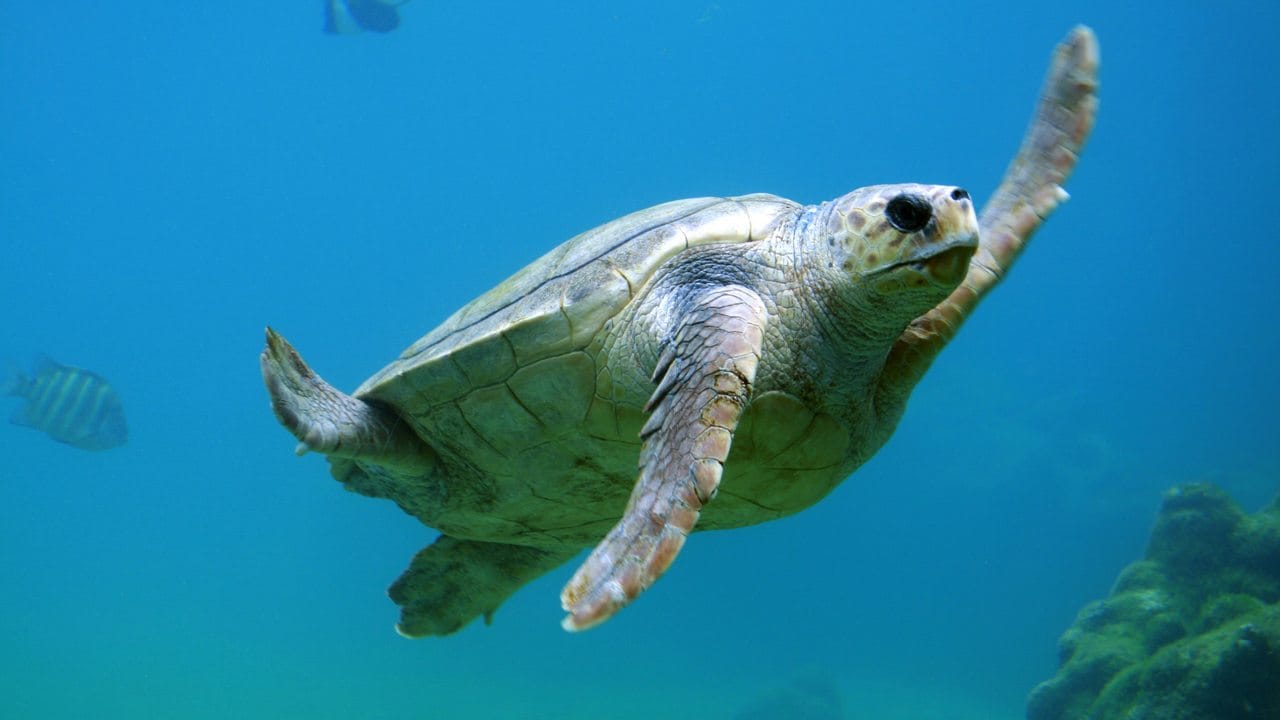
Sea turtle swimming underwater. Image credit: Unsplash/Tanguy Sauvin
Keystone species that ecosystems would collapse without
Turtles are an important player in the health of ecosystems. Known as a ‘keystone species’ for the crucial part they play in their surroundings, the ecosystem itself would collapse if they were taken out of the equation, and here’s why. Turtles are omnivorous creatures, considered gardeners of the marine ecosystem. They help keep oceans clean by feeding on algae, seagrass, and other vegetation. This allows the growth of flora and becomes the breeding ground for a host of other organisms.
[embedded content]
They help corals grow. Turtles also eat sponges and allow a variety of them to grow in the reef. They also keep them in check by ensuring they don’t overgrow and kill the corals that take time to grow. Essentially, turtles form an important link in the food chain. They are both preys for sharks and orcas but certain turtle species are also predators for jellyfish and keep their population in check.
We sapiens may not see their value unless there’s something in it for us, but turtles directly help the economy of seaside villages by enabling a turtle-watching ecotourism industry. The Velas village in Maharashtra is one such example of turtle watching ecotourism. The Olive Ridley turtles come here to lay their eggs and tourist come in to watch them hatch. I recently discovered that there Mumbai’s coastline has a coral reef as well.
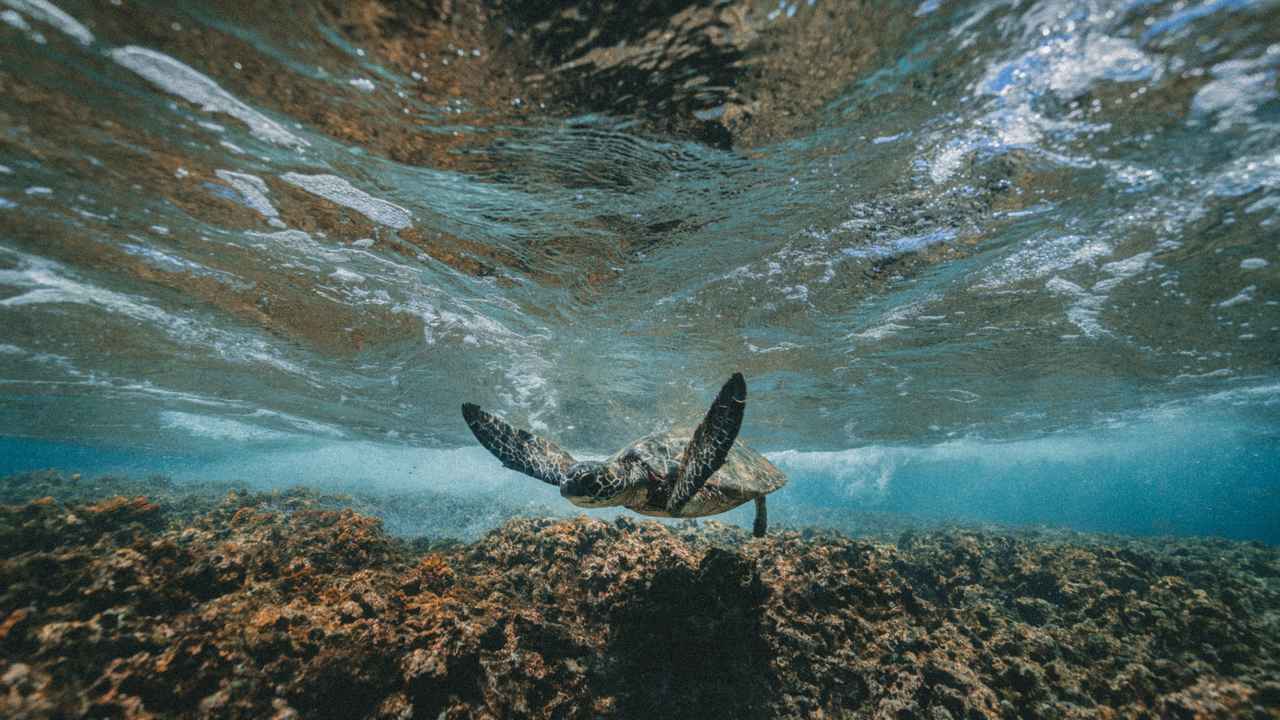
Majestic and calm. Image credit: Unsplash
One legend proclaims that the shells of turtles are a uniting figure of heaven and earth. The top of the shell being heaven and the belly-side, Earth. In Indian mythology, the survival of the sea turtle is seen as important for the survival of the Earth. The myth states that the earth rests on the back of three elephants, which, in turn, are standing on the shell of a giant sea turtle, Chukwa, which swims in an infinite sea.
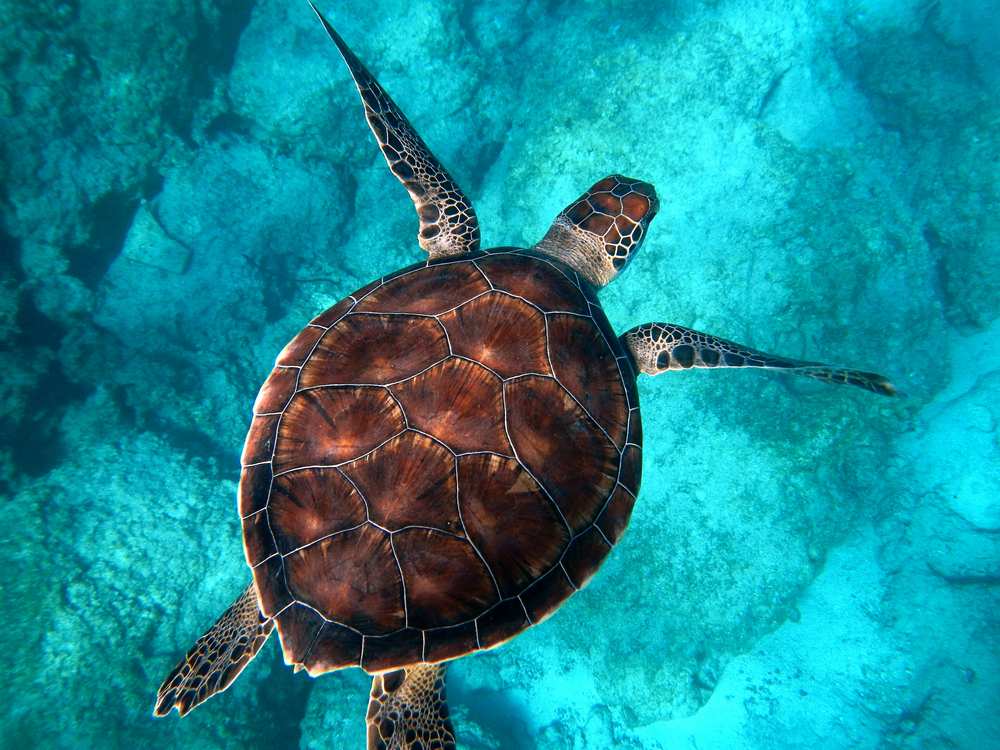
The top of the shell is heaven and the underside is the Earth. Image credit: Unsplash/Randall Ruiz
In Balinese scripture, any person who consumes or supports the killing of turtles is not a good Hindu – they dishonour themselves and apparently disconnect from the proper Balinese religious practice. Native Americans looked at the turtle as a symbol of Mother Earth and referred to the continent of North America as Turtle Island. For the Aztecs, turtles were a symbol of cowardice and boastfulness: hard outwardly, soft inwardly.
For an animal that has inspired everything from poetry to movies to myth and legends, the turtle’s fate in real life is bleaker than fantasy.
Threats to their habitat
Nearly all species of turtles are classified under the endangered list of animals. They are battling a loss of their habitat and their nesting grounds are under threat as well due to climate change. The eggs of turtles do not have predetermined gender, they are based on the temperature of the nest at the time of the hatching. Turtle bury their eggs in the sands on the beach and leave it there to hatch.
Sea turtles can lay 110 eggs in a nest and can lay more than one batch of eggs in one season. This is called Temperature-Dependent Sex Determination (TSD). Warmer temperatures produce mostly females, and cooler temperatures produce a majority of males.
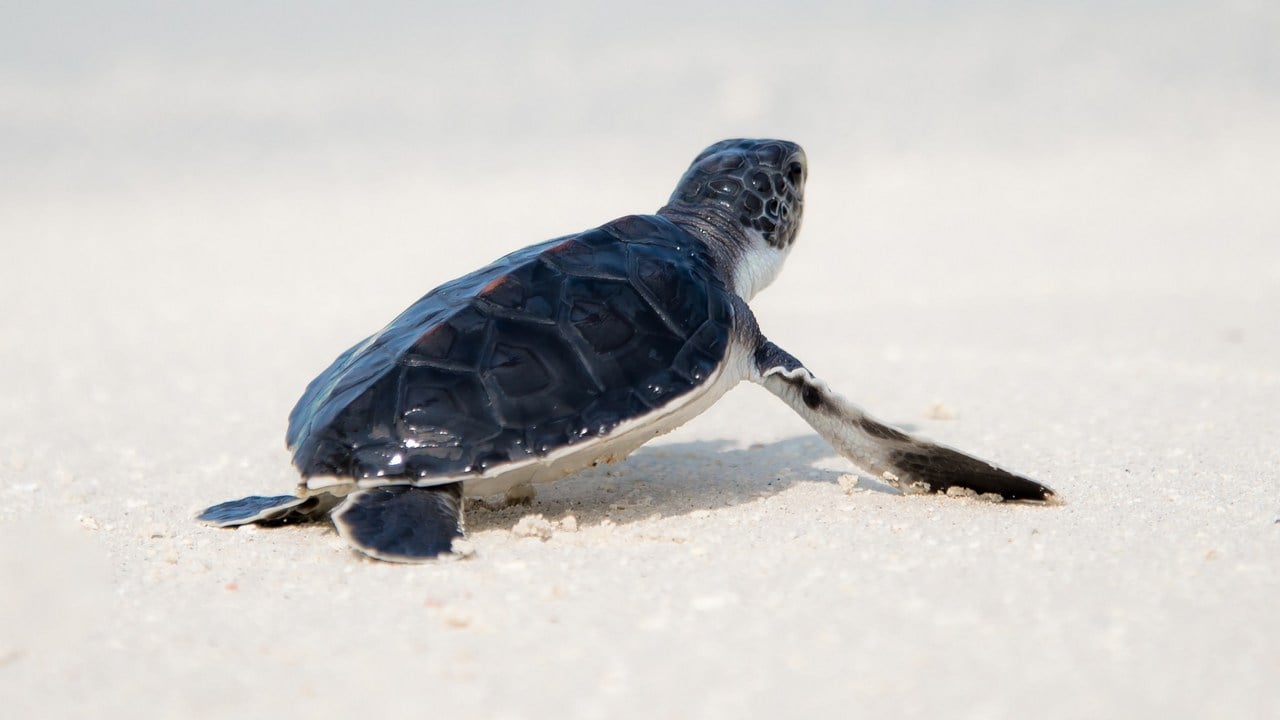
A baby sea turtle on the seashore. Image credit; Unsplash/Jacob Nasyr
Their eggs are eaten by human beings and animals alike and they are killed for their meat and shells. Turtles also form a part of the illegal pet trade.
Turtles are also affected by fishing and maritime activity. They get caught up in the nets during fishing and become part of bycatch. Dredging of the seafloor affects turtles and a lot of other marine life. Water pollution is another reason for their declining numbers. Turtles ingest the plastic that floats in the seas and oil from spills. Chemicals that are offloaded into the seas by industries make these sea animals sick and weaken their immune systems. This myriad of pollution is affecting turtles much akin to the myriad of terrestrial pollution affecting people and animals alike.
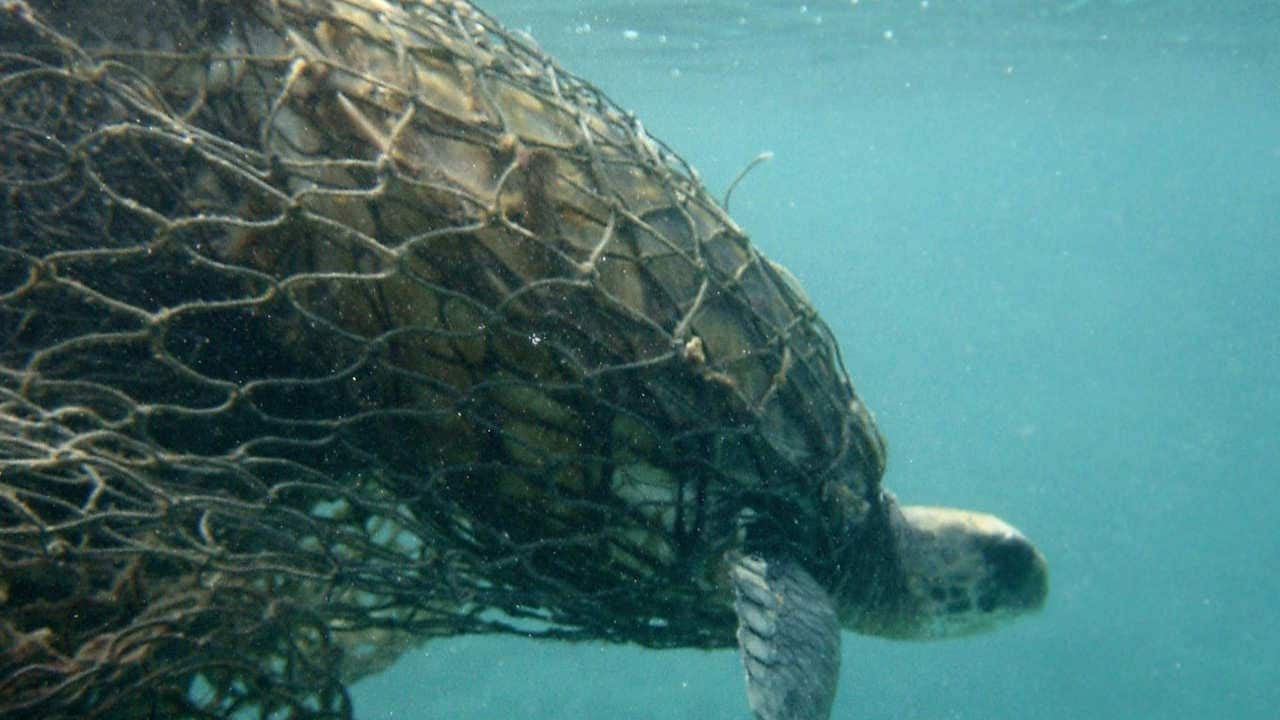
Sea turtle caught in fishing nets. Image credit: Wikimedia Commons
Conservation efforts in India
There are various conservation efforts that are taking place in India to protect the turtle species that live in these waters. TATA consultancy services have got together with an NGO Sahyadri Nisarga Mitra and have worked with the Velas community in Maharashtra to educate them about the importance and vulnerability of turtles. They started the Marine Turtle Conservation Program that teaches volunteers to retrieve freshly laid eggs and place them in hatcheries where they will hatch safely. They will then be released into the ocean when the time is right. This effort has now been taken over by the state government, who have taken over the project.
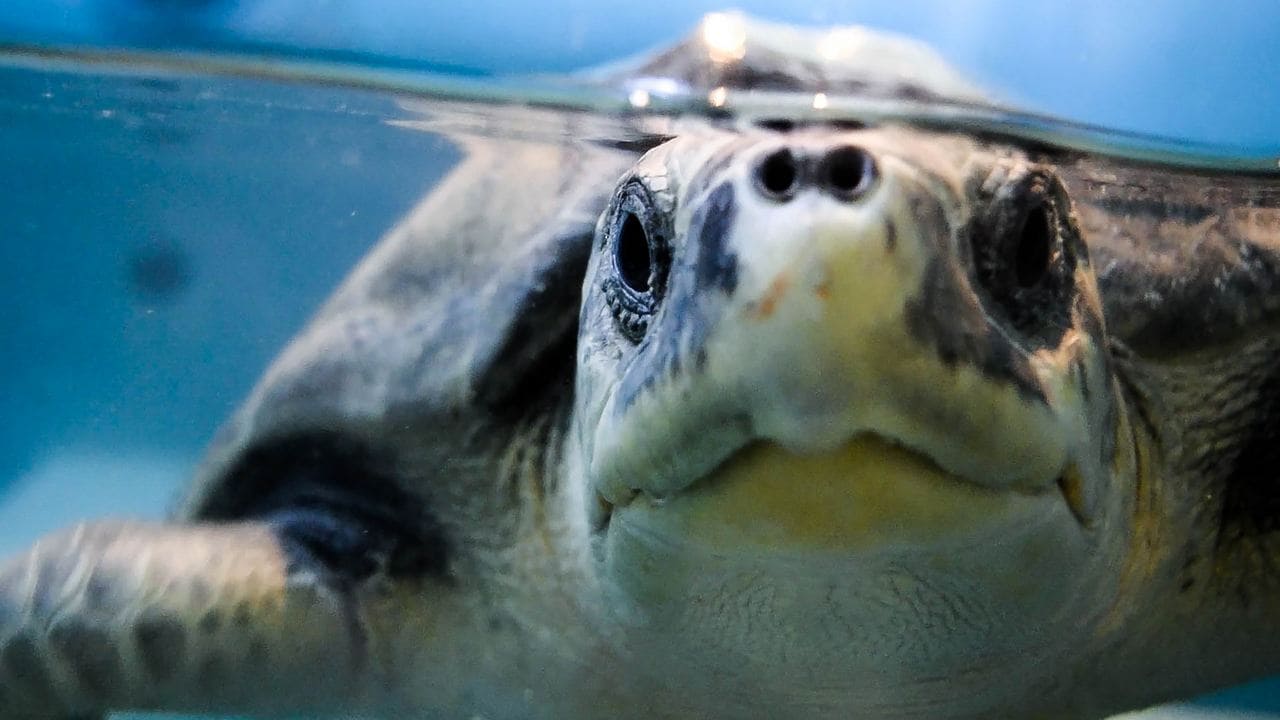
How can anyone cause harm to such a face? Image credit: Unsplash/Hoodh Ahmed
Another project by the Turtle Survival Alliance (TSA) helps protect terrapin and turtles in the Batagur pond at Sajnekhali at the Tiger Reserve in West Bengal. They work jointly with the West Bengal Forestry Department. The turtles in this area were not able to spaw young ones because they did not have a nesting area and the high rate of predators. TSA built a fenced-in enclosure that keeps the mongoose and water lizards out, allowing the turtles a chance to populate.
The state of Orissa has also done their bit in saving the Olive Ridley Turtles. They started Operation Kachhapa in September 1998 to deal with fishing boats that operate mechanised fishing within five kilometres of the shoreline. Even though there are laws in place, many of these boats do not follow them and these animals bear the brunt. They worked with Orissa State Forest Department and the Wildlife Society of Orissa and other local NGOs for this project. While they conducted many activities to raise awareness for their conservation and increased the patrolling of the seas to ensure the boats follow the laws, this project was not a big success.
Satish Bhaskar: The turtles’ Man Friday
Satish Bhaskar is India’s pioneer in sea turtle research and conservation. Over the course of his career, Satish surveyed over two-thirds of the country’s coastline, on foot, charting out, for the first time, the habitats of these animals. His efforts helped create the first records detailing all the nesting sea turtles populations in Andaman and Nicobar archipelago and the Lakshadweep islands.
Bhaskar fell in love with wildlife while working under Romulus Whitaker. In addition to a lack of information on sea turtles across India, he quickly learnt that they were increasingly under threat. Satish’s work and efforts set the stage for all present-day sea turtle research and conservation in the country. Today, his observations serve as valuable baseline data for studies concerning these animals.
While Satish’s time on the field involved several solo adventures, his time in the Andaman and Nicobar islands would not have been possible without the help of a few unlikely friends.
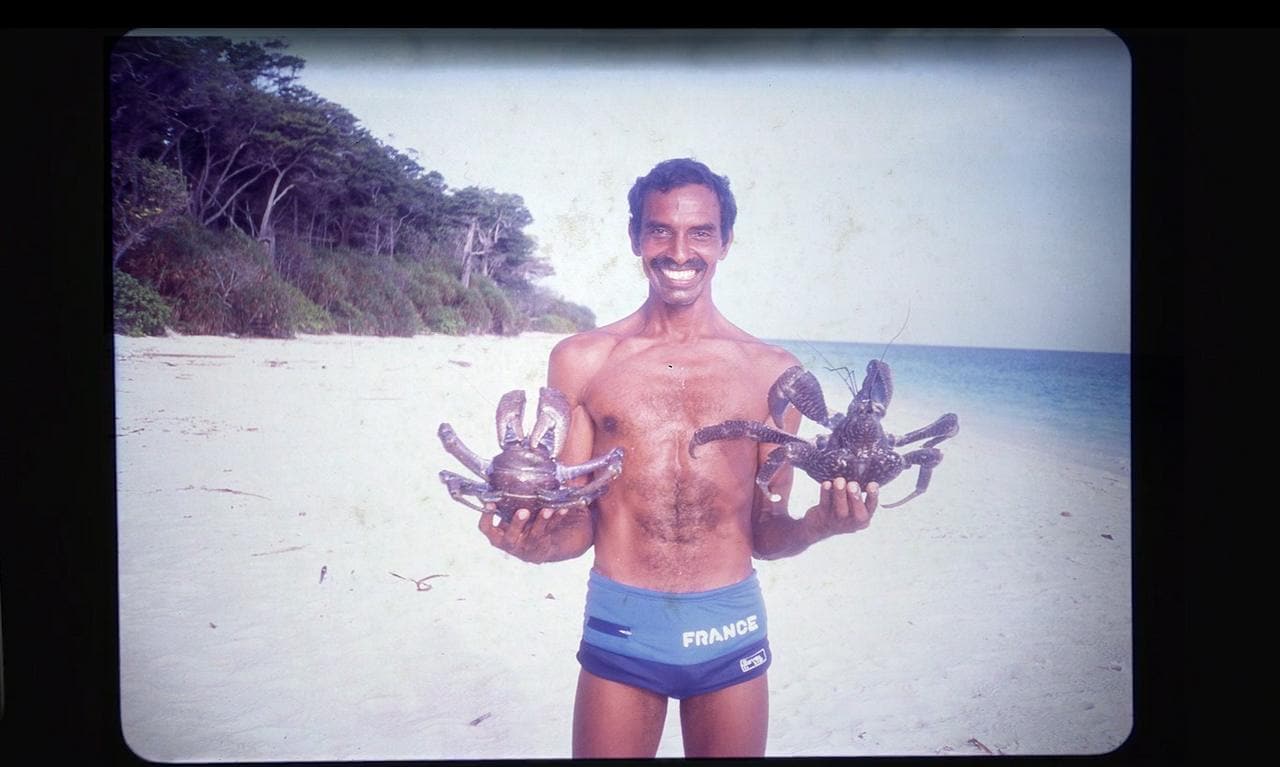
Satish Bhaskar holding crabs. Image credit: Saw Pau-UngBhaskar desperately needed help navigating the wild terrains of the islands. It was here that he met Karen — a once-isolated Burmese tribe that were brought to the islands by the British colonials. Known for their shy nature, the Karen settled in the town of Webi (the hidden village) where they stayed predominantly isolated from the rest of the islanders. In what was otherwise a solitary path, Satish found camaraderie. The Karen’s inherent wisdom of the forest and ocean proved to be just what Satish needed. One of his closest friends is a Karen boatman named Pau-Ung, who sailed Satish — and several future turtle researchers — across the archipelago in search of sea turtles.
In April 2010, the International Sea Turtle Society awarded its annual Sea Turtle Champions Award to Bhaskar in recognition of all the surveys and research he conducted on sea turtles in South and Southeast Asia.
The Turtle Walkers is a documentary that picks up twenty-three years after Satish’s final survey. While it documents his return to the Andaman islands one last time to reconnect with his old Karen friends and see a turtle, the film also takes a closer look into the current sea turtle research taking place on the islands. The story investigates the legacy that Satish has left behind and what it is that fuels these turtle walkers across time to keep pursuing this work, away from the comforts of home.
When asked on the choice of Satish as a protagonist, Taira mentioned, “Satish’s story is a look into the unique relationship we share as humans with nature. Very often in his career, Satish marooned himself on islands and coasts for months together, with only sea turtles for company. I was curious to learn what this must have felt like for him, and the close encounters he had with these animals.”
Co-directors Taira Malaney and Krish Makhija are presently in the midst of filming The Turtle Walkers.
<!–
Find our entire collection of stories, in-depth analysis, live updates, videos & more on Chandrayaan 2 Moon Mission on our dedicated #Chandrayaan2TheMoon domain.
–>
Post a Comment